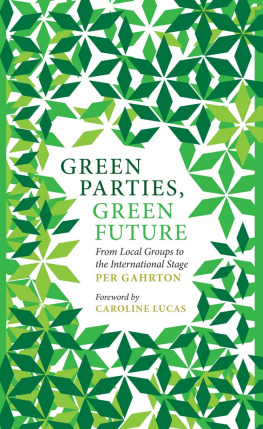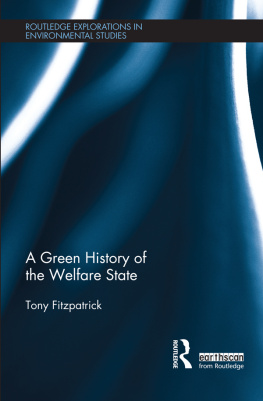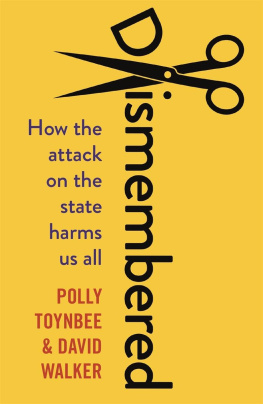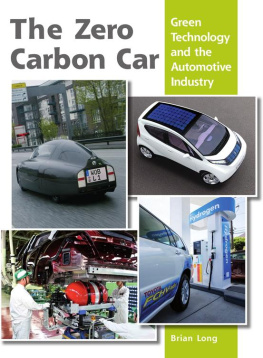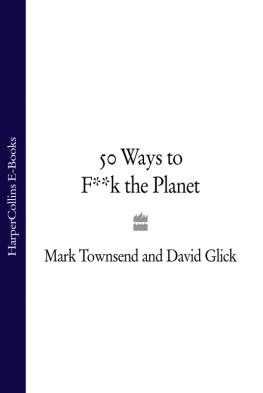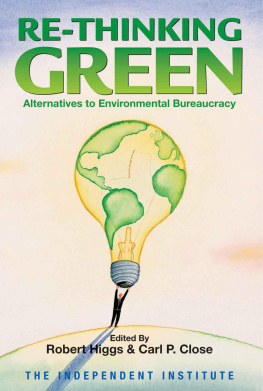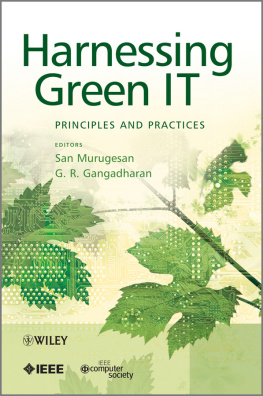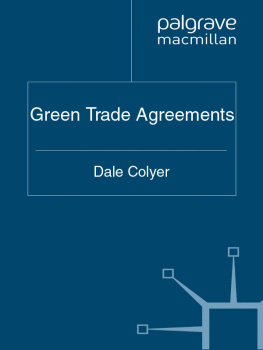MAKING THINGS GREENER
First published 1998 by Ashgate Publishing
Reissued 2018 by Routledge
2 Park Square, Milton Park, Abingdon, Oxon, OX14 4RN
711 Third Avenue, New York, NY 10017, USA
Routledge is an imprint of the Taylor & Francis Group, an informa business
Copyright Mardie Townsend 1998
All rights reserved. No part of this book may be reprinted or reproduced or utilised in any form or by any electronic, mechanical, or other means, now known or hereafter invented, including photocopying and recording, or in any information storage or retrieval system, without permission in writing from the publishers.
Notice:
Product or corporate names may be trademarks or registered trademarks, and are used only for identification and explanation without intent to infringe.
Publishers Note
The publisher has gone to great lengths to ensure the quality of this reprint but points out that some imperfections in the original copies may be apparent.
Disclaimer
The publisher has made every effort to trace copyright holders and welcomes correspondence from those they have been unable to contact.
A Library of Congress record exists under LC control number: 98070992
ISBN 13: 978-1-138-33379-6 (hbk)
ISBN 13: 978-0-429-44577-4 (ebk)
When I began the research on which this book is based, I was confronted by a great deal of cynicism. One wit commented: Green industry? Well, that will be the shortest Ph.D. ever! Others were more cutting, labelling the greening of industry as a fraud or as a side benefit of cost cutting measures. But I was convinced that there were companies out there at least attempting to be ecologically sustainable in their manufacturing, and who were doing it for reasons other than just the bottom line. The key questions for me were: What factors other than financial benefits motivate companies to go green? Why are some companies doing it when others are not? What factors help and hinder the greening of industry? And how can the greening of industry be fostered?
The past seven years have been a journey of discovery. In seeking answers to my questions, I have had the privilege of meeting and spending time with some amazing people. Their stories form the basis of this book. I came home often from my interviews with them, feeling a mixture of elation, excitement and frustration: elation, because I was one step closer to finding the answers to my questions; excitement, because I had been challenged by new ideas and concepts and had caught a glimpse of new possibilities; frustration, because the hurdles which were (and are) hindering these individuals and their companies in their attempts to be green seemed (and still seem) so pointless and unnecessary.
As we approach the next millennium, there seems to be an unwillingness amongst governments, institutions, corporations and individuals to accept that the current Industrial Era paradigm is ecologically unsustainable in even the short term, let alone in another thousand years. This book is written in the hope that people will see that it is not an impossible task for industry to become sustainable. It does not require us to do anything outrageous, but simply to make a commitment to an environmental ethic and to demonstrate that through practical actions. If we do this, the celebrations for the new millennium will truly begin!
I would like to acknowledge the support of many people who have helped me in the preparation of this book.
Both in Australia and overseas, many people and organisations have provided me with valuable background information, for which I am grateful. Special thanks go to the representatives of the companies included in this study, who so patiently and willingly gave of their time and their interest to provide me with information, to check the accuracy of my understandings and to update my information as circumstances changed.
Thanks are also due to Professor Norman Blaikie, who provided incisive comments and helpful advice at several key points of the research and during the writing process, and to my colleague, Mary Mahoney, who has encouraged and supported me during the preparation of this book.
But the two most heartfelt acknowledgements are reserved for my friend and colleague, Associate Professor Erica Hallebone, and for my family.
Erica has been a mentor since my first day of undergraduate study. Her inspiration, encouragement, friendship, humour, support, wisdom, patience, ready availability as an advisor and (most of all) her belief in me, have been unending.
To my family - Ron, Ruth, Joel and Paul - who have nagged me when I needed it; put me in my place when I seemed likely to go Over the top\ done my household chores, tolerated my absence, and boasted about my research and this book (so that I had no choice but to complete it), thank you. Without your support and belief, it would never have happened.
ABS | Australian Bureau of Statistics |
ACT | Australian Conservation Foundation |
ACIC | Australian Chemical Industry Council |
ACSMA | Australian Chemical Specialty Manufacturers Association |
AFCO | Australian Federation of Consumer Organisations |
AMC | Australian Manufacturing Council |
CDA | controlled droplet application |
CEDA | Committee for Economic Development of Australia |
CEO | Chief Executive Officer |
CFL | compact fluorescent light bulb |
CSIRO | Commonwealth Scientific & Industrial Research Organisation |
EMDG | Export Market Development Grant (scheme) |
EPA | Environment Protection Authority |
ESD | Ecologically Sustainable Development |
GDP | gross domestic product |
HDPE | high density poly-ethylene |
IBE | Institute of Business Ethics |
IoD | (British) Institute of Directors |
ISO | International Standards Organisation |
ITES | International Trade Enhancement Scheme |
NGO | non-governmental organisation |
OPEC | Organisation of Petroleum Exporting Countries |
PACIA | Plastics and Chemical Industries Association Inc. |
PET | Polyethylene Tetephthalate |
R & D | research and development |
RETP | resource and energy throughput |
RMTT | Royal Melbourne Institute of Technology |
SECV | (former) State Electricity Commission of Victoria |
UV | ultra-violet (radiation) |


